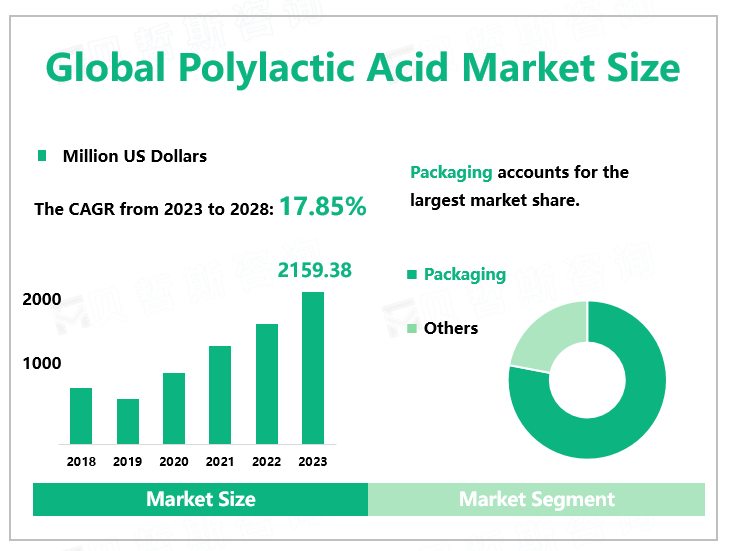Global Polylactic Acid Market Overview
According to Global Market Monitor, the global polylactic acid market size will reach $2159.38 million in 2023 with a CAGR of 17.85% from 2023 to 2028.
Polylactic acid is a thermoplastic aliphatic polyester derived from renewable resources, including corn starch (in the US), cassava root, potato chips or starch (mainly in Asia), or sugar cane (in the rest of the world), and has become popular. Polylactic acid generally has good mechanical and processing properties, and the product can be quickly degraded in various ways after being discarded.
The Packaging Segment Occupied the Biggest Share in 2022.
Similar to other sustainable bioplastics, the PLA market size has great potential as the material has been used in various packaging applications for food, beverage, and other consumer products with short shelf life. In addition, because of its versatility, the material is used in more fields, including textiles, construction, and automobiles. As a result, governments worldwide are promoting the production and consumption of sustainable materials. By application, the packaging segment occupied the biggest share in 2022.

Market Drivers and Challenges
Polylactic acid (PLA) is a novel biodegradable material made from starch derived from renewable plant resources such as corn. With good biodegradability, it can be completely degraded by microorganisms in nature after use, and eventually produce carbon dioxide and water, which does not pollute the environment and is beneficial to environmental protection, being recognized as an environmentally friendly material. So increased consumer awareness in terms of recyclability, green packaging, and sustainability is likely to drive PLA consumption in the coming years. The price, which is about 3-4 times that of polyethylene, and the polymerization process of polylactic acid determines the high cost of PLA.
|
Drivers |
The range of PLA applications is increasing. |
|
Government incentives are one of the main factors driving the market. |
|
|
The development of the PLA industry has been driven by increased consumer awareness. |
|
|
The increasing production and demand for PLA in the Asia-Pacific region presents a major opportunity for the development of the PLA industry. |
|
|
Challenges |
The cost of PLA is relatively higher than that of synthetic plastics, so it is a constraint to market growth. |
|
The polylactic acid material is not strong enough. |
We provide more professional and intelligent market reports to complement your business decisions.